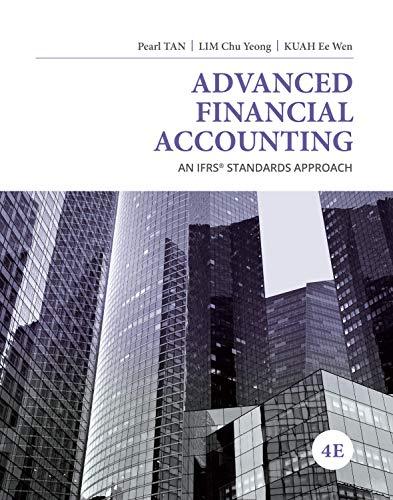Question
UNDERSTANDING THE ENTITY'S INTERNAL CONTROL AUDITING THEORY 1. Which of the following is a correct statement in relation to internal controls? I. Internal controls are
UNDERSTANDING THE ENTITY'S INTERNAL CONTROL
AUDITING THEORY
1. Which of the following is a correct statement in relation to internal controls?
I. Internal controls are process designed, implemented and maintained by those charged with
governance, management, and other personnel
II. Internal controls provide absolute assurance about the achievement of the entity's objectives
on financial reporting, operations, and compliance.
III. Internal controls can be implemented using information technology.
A. I and III only B. II only C. II and III only D. I, II and III
2. Which of the following statements is/are correct?
I. The auditor can eliminate substantive tests on significant account balances and classes of
transactions for an entity that has exceptionally strong internal control
II. There is a direct relationship between an entity's objectives and the controls it implements to
provide reasonable assurance about their achievement.
III. Effective controls can reduce the cost of external audit.
A. I and III only B. II only C. II and III only D. I, II and III
3. Internal controls may be classified as?
I. Manual, automated or IT-dependent controls
II. Preventive, detective or corrective controls.
a. I only b. II only c. Both I and II d. Neither I nor II
4. Internal control can only provide reasonable, not absolute, assurance of achieving entity control
objectives. Which of the following is a limiting factor of achieving those objectives?
I. In the performance of most control procedures, there are possibilities of errors arising from
mistakes in judgment.
II. The board of directors is active and independent.
III. The cost of internal control should not exceed its benefits.
IV. Collusion may occur even if incompatible functions or duties have been segregated.
A. I and III only B. I, II and III only C. I, III and IV only D. I, II, III and IV
5. Which of the following conditions supports strong internal control?
A. Strict monitoring by the Bureau of Internal Revenue.
B. The existence of related parties and related party transactions.
C. Pressure by the financial community to improve earnings performance.
D. An economic downturn.
6. Which of the following statements best describes "control activities"?
A. The entity's process for identifying business risks relevant to financial reporting objectives
and deciding about actions to address those risks, and the results thereof.
B. The system for transferring information from transaction processing systems to the general
ledger or the financial reporting system.
C. Policies and procedures that help ensure that management directives are carried out.
D. This includes the governance and management functions and the attitudes, awareness,
and actions of those charged with governance and management concerning the entity's
internal control and its importance to the entity.
7. Which of the following is not an element of "control environment"?
A. Commitment to competence
B. Communication and enforcement of integrity and ethical values
C. Assignment of authority and responsibility
D. Leadership responsibilities for quality within the firm
8. Management's attitude towards aggressive financial reporting and its emphasis on meeting
projected profit goals most likely would significantly influence an entity's control environment
when:
A. Management is dominated by one individual who is also a shareholder.
B. External policies established by parties outside the entity affect its accounting practices.
C. The audit committee is active in overseeing the entity's financial reporting policies.
D. Internal auditors have direct access to the board of directors and entity management.
9. An entity's risk assessment process includes how management:
I. Identifies business risks relevant to financial reporting objectives
II. Estimates the significance of the risks
III. Assesses the likelihood of the occurrence of risks
IV. Decides on actions to address the risks.
A. I and III only B. I, II and III only C. I, III and IV only D. I, II, III and IV
10.Risks can arise or change due to circumstances such as the following, except:
A. There is a change in the regulatory or operating environment.
B. No new employees have been hired by the company.
C. The company switched from manual information systems to a computerized system.
D. The accounting and financial reporting framework has experienced significant revisions.
Step by Step Solution
There are 3 Steps involved in it
Step: 1

Get Instant Access to Expert-Tailored Solutions
See step-by-step solutions with expert insights and AI powered tools for academic success
Step: 2

Step: 3

Ace Your Homework with AI
Get the answers you need in no time with our AI-driven, step-by-step assistance
Get Started


